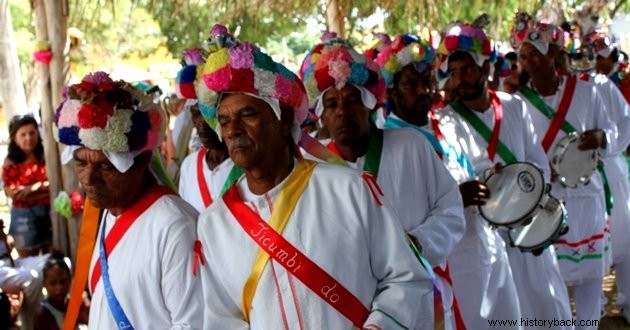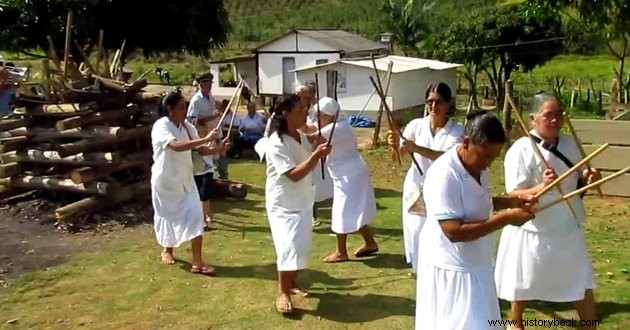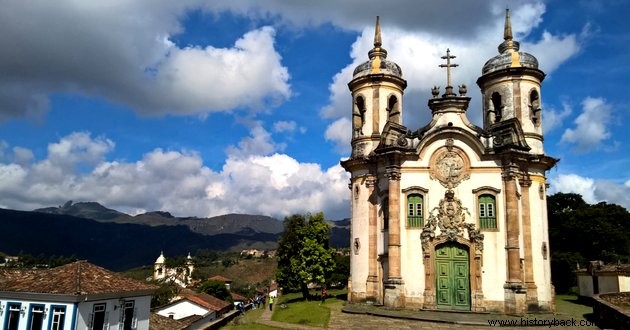In the Southeast Region of Brazil, formed by the states of São Paulo , Minas Gerais , Rio de Janeiro and Holy Spirit , there is a cultural diversity richly influenced by indigenous, African, European and Asian cultures.
According to 1998 data from the IBGE (Brazilian Institute of Geography and Statistics), the Southeast Region of Brazil has the largest number of people, totaling a population of 70,190,565 inhabitants.
Festivals, gastronomy and typical dances, among others, represent customs and cultural manifestations of the Southeast region.
Parties of the Southeast Region
Check below the main parties in Southeast Brazil.
Carnival of the Southeast Region

The most popular party in Brazil is celebrated in all the states of the southeastern region, where there are samba schools parades.
Although the parade in São Paulo has gained greater proportions in recent years, the parade in Rio de Janeiro remains the best known in Brazil and in the world.
See also:History and Origin of CarnivalJune festivities in the Southeast Region

The festivals of popular saints (Santo Antônio, São João and São Pedro), also known as caipira festivals, are Brazilian popular festivals especially celebrated in the Northeast and Southeast regions.
These parties are celebrated with square dancing, and with traditional foods and drinks of the time (such as hominy, popcorn, cornmeal cake, sweet rice and quentão).
In addition to the bonfire, many June games are present at these parties, which are decorated with flags and colorful paper balloons. They are:chain, mail-elegant, fishing, among others.
See also:June FestivalsOther Celebrations

Check below a list of some more typical festivals celebrated in the Southeast Region.
- Feast of Senhor Bom Jesus de Pirapora
- Bumba my boi party
- Caiapó Festival
- Fiesta da Cavalhadas
- Congado Party
- Feast of the Divine
- Feast of Yemanja
- Boiadeiro Pawn Party
- Folia de Reis or Reisado
- Feast of the Ox Kings
- New Year's Eve Party
- Feast of the Rosary
- Ticumbi Party
Dances of the Southeast Region
Check out below some of the dances present in the culture of the Southeast Region.
Hit arrows

It is a dance of a religious nature, in praise of São Sebastião, typically from Espírito Santo. In this dance, the dancers (men and women) use two arrows each to set the rhythm along with the tapping of the feet.
Punch miner

It is a typical dance from Minas Gerais that only involves the participation of men, who use wooden sticks to mark the rhythm of the choreography.
See also:Folk DancesOther dances from the Southeast Region
- Batuque
- Capoeira*
- Catira
- Caxambu
- Ciranda
- Congo
- Azorean dance
- German Dance
- Green Cane Dance
- Anteater Dance
- Dance of St. Gonçalo
- Dance of old people
- Fandango
- Funky
- Jongo
- Gang
- Samba in a scarf
* originally, capoeira is a martial art that mixes fight, culture, sport, dance and music.
See also:History of Dance in BrazilMusic from the Southeast Region
As far as music is concerned, the best-known musical expression in the Southeast region comprises the following styles:
- Bossa Nova
- Pagoda
- Samba
- Cry
- Funky
- Lundu
Sights of the Southeast Region
Despite being known for its famous beaches, such as Copacabana beach, the two symbols that reflect tourism in Rio de Janeiro are Cristo Redentor (also called Corcovado because of the hill where it is located) and the Cable Car Sugar Loaf.

In the state of São Paulo, one of the highlights in terms of tourist attractions is the Ibirapuera Park.

In the state of Minas Gerais, among the various tourist attractions, one of the places that stands out the most is the historic center of the city of Ouro Preto.

Finally, as one of the main tourist attractions in the state of Espírito Santo, we have the Pedra Azul State Park.
 See also:The Seven Wonders of the Modern World
See also:The Seven Wonders of the Modern World Cuisine of the Southeast Region
Rio de Janeiro is the state of origin of the best known Brazilian dish in the world. The well-known and appreciated feijoada It is a carioca delicacy.

São Paulo is the second city in the world that consumes most pizza and, therefore, has great pizzerias.
In Minas Gerais, Minas cheese or Minas cheese, cheese bread and also dulce de leche are highly appreciated at a national level.

In Espírito Santo, in turn, the typical dish is moqueca capixaba, a dish that is accompanied by pirão.

Other dishes from Southeast Region
The cuisine of the Southeast region is quite rich. In addition to the dishes above, we still find:
- Angu
- Codfish cake
- cornmeal cake
- Couscous
- Farofa
- Topeiro beans
- Cassava or cassava
- Pirao
- São Paulo style
- Bean tutu
Myths and Legends of the Southeast Region
A series of myths and legends bring wealth to the folklore of the Southeast Region. See some examples.
Werewolf
The Werewolf is represented by a man who transforms into a wolf on a full moon night.
 See also:Legend of the Werewolf
See also:Legend of the Werewolf Headless Mule
The headless Mule is represented by a donkey that, in place of its head, has flames of fire.
 See also:Legend of the Headless Mule:A Creepy Story
See also:Legend of the Headless Mule:A Creepy Story Other myths and legends of the Southeast Region
- Invisible Horse
- Curupira
- Mass of the Dead
- Bogeyman
Learn all about folklore legends and myths by consulting the texts below:
- Legends of Brazilian Folklore
- Legends of the Southeast Region
- African Legends
- Indigenous Legends
Religion in the Southeast Region
Due to especially Portuguese influence, most of the population of the Southeast region is Catholic.
Religion is present in the cultural marks of great importance located in this region of Brazil.
The Basilica of Nossa Senhora Aparecida, in São Paulo, for example, is the second largest basilica in the world, after St. Peter's Basilica in the Vatican.
Our Lady of Aparecida is the patron saint of Brazil and, thus, on the day dedicated to her (October 12), thousands of devotees flock to the Catholic temple.

Christ the Redeemer, in Rio de Janeiro, was considered one of the seven wonders of the modern world and is also second in the world for the largest sculpture of Christ.
The statue is Brazil's tourist poster in the world.

The Church of São Francisco de Assis, in Minas Gerais, was considered one of the seven wonders of Portuguese origin in the world.
The famous sculptor known as Aleijadinho worked nearly three decades on its architecture.

The Penha Convent, in Espírito Santo, is one of the oldest sanctuaries in Brazil and is considered a historical and cultural heritage. It is the largest tourist attraction in the state.

Other religions of the Southeast Region
- Spiritism
- Umbanda
- Candomblé
- Evangelical Religion
- Buddhism
- Messianism
- Anglicanism
Jokes from the Southeast Region
As in other regions of Brazil, the great cultural diversity of the Southeast Region is also reflected in traditional games.

The All Matter separated a selection with the best known games and games in the Southeast Region of Brazil. Check it out!
- Blind snake
- Hopscotch
- Marbles
- Taco or stick in a can
- Flag or stealth flag
- Yellow cow
- cockfight
Curiosities about the Southeast Region

- The oldest city in Brazil, São Vicente, is located in the Southeast Region, more specifically in the state of São Paulo.
- Minas Gerais is the Brazilian state with the most municipalities, accounting for a total of 853.
- Rio de Janeiro was once the capital of Brazil.
- The largest port complex in Latin America is located in the Southeast Region of Brazil. This is the Port of Santos, in the state of São Paulo.
- The Southeast is the most populous Brazilian region.
Folklore Quiz
7Graus Quiz - Quiz | How much do you know about Brazilian folklore?Don't stop here! Toda Matéria has selected a series of rich texts to help you complement your studies.
- Cultural diversity in Brazil
- Brazilian Culture
- Northeast Culture
- Southern Culture
- Culture of the Midwest
- Culture of the North:Know Its Wealth!
